Europe 8-Bit Microcontroller Market Size
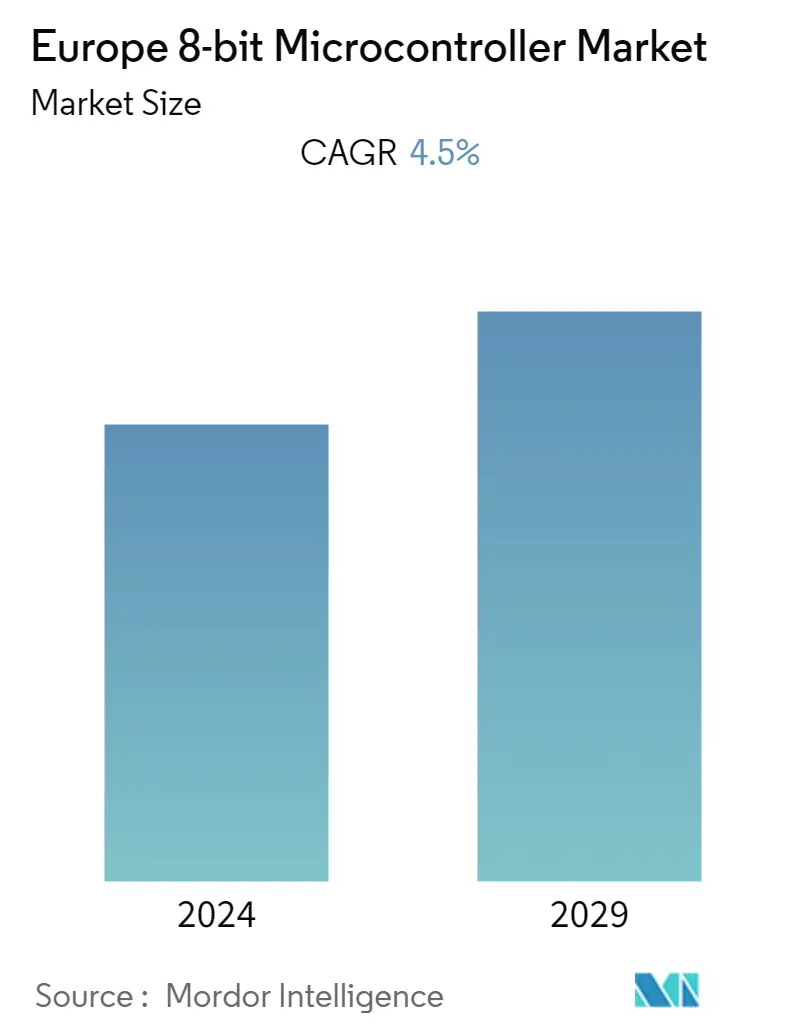
| Study Period | 2019 - 2029 |
| Base Year For Estimation | 2023 |
| Forecast Data Period | 2024 - 2029 |
| Historical Data Period | 2019 - 2022 |
| CAGR | 4.50 % |
| Market Concentration | Medium |
Major Players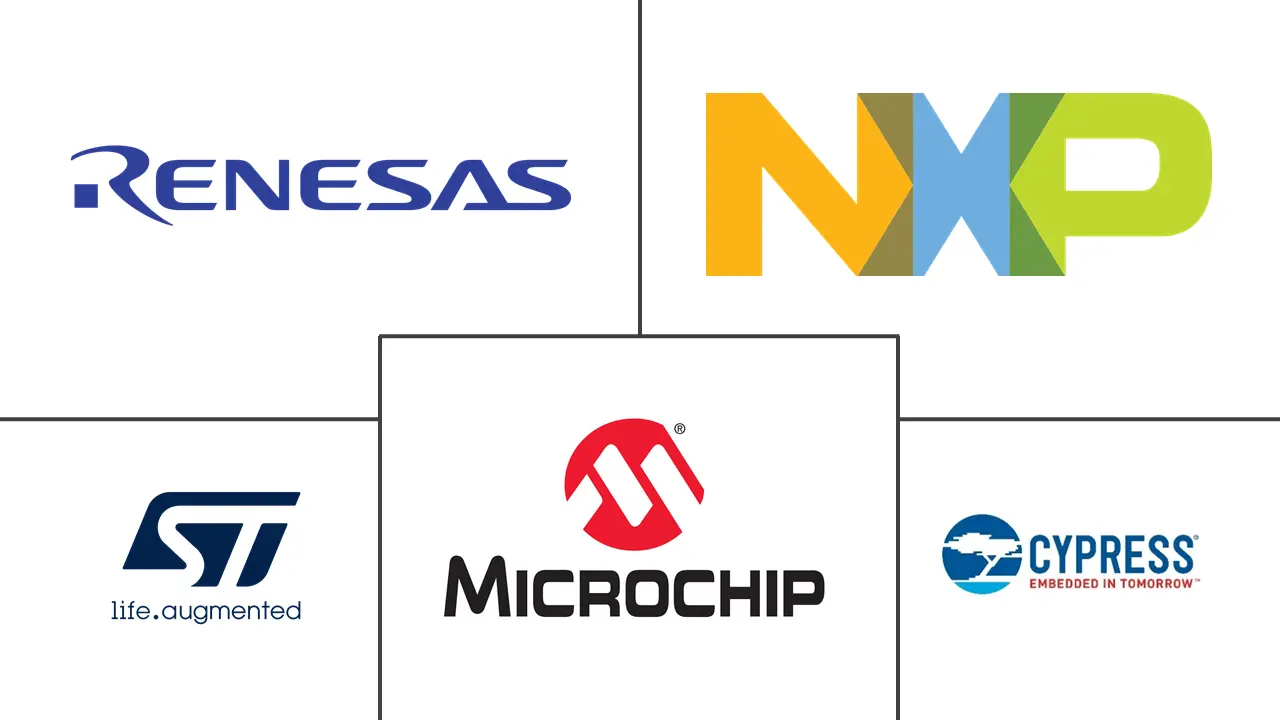
*Disclaimer: Major Players sorted in no particular order |
Europe 8-Bit Microcontroller Market Analysis
The Europe 8-bit microcontroller market is expected to register a CAGR of 4.5% over the forecast period (2021 - 2026). With the peak of COVID-19, the companies experienced a significant delay in raw materials, causing alterations to production schedules. Product shipping to the end-users and distribution partners was highly affected.
- The increasing use of smartphones in the region and the availability of smartphones in various price ranges affect the market's growth. Connected and cloud technologies are increasingly integrated into smartphones, resulting in widespread usage across multiple verticals for business and industrial purposes.
- For Instance, in November 2020, Microchip Technology has introduced the PIC18 8-bit microcontroller (MCU) series, which features a CAN FD (Controller Area Network Flexible Data-Rate) interface. The PIC18 Q84 CAN FD controller family contains several Core Independent Peripherals (CIPs) that handle various tasks without a CPU. The chip can carry sensor data to a CAN FD bus without gateways or complicated network switching mechanisms, making it ideal for automotive and industrial automation applications.
- Process shrinks have allowed 8-bit low-pin-count (LPC) microcontrollers to enhance their functionality and serve more applications at lower costs than ever before. While the 0.35m technology node was limiting even LPC devices, developments in design, motor control, innovative energy management, Ethernet, and wireless connectivity requirements for home automation and control have led to a new variety of applications for 8-bit MCUs.
- Most medical equipment collects analog physiological signals, which require signal conditioning such as amplification and filtering before being measured, monitored, or displayed. For applications such as personal blood pressure monitors, pulse oximeters, and heart rate monitors, 8-bit MCUs can construct an ultra-low-power platform that includes the entire signal chain. Mobile devices with integrated RF/ZigBee or Wi-Fi interfaces and transceivers for remote patient monitoring are also becoming more popular.
- 8-bit microcontrollers are inexpensive and straightforward to program. In reality, they are still widely used in a variety of applications after four decades. However, if users are working on a product that requires a lot of internal Random Access Memory (RAM), they might have to go with a 32-bit instead of an 8-bit. 32-bit microcontrollers often have eight times the RAM of their 8-bit counterparts. A 32 pin microcontroller is the better processor application option if the user requires a large buffer to hold audio data.
Europe 8-Bit Microcontroller Market Trends
This section covers the major market trends shaping the Europe 8-Bit Microcontroller Market according to our research experts:
Consumer Electronics and Home Appliances is Driving the Market
- Smoke detectors, thermostats, and glass breakage detection systems benefit from the ultra-low power consumption and integrated high-performance analog characteristics of 8-bit MCUs. Smart sensor applications that require home automation, remote monitoring, and control can benefit from integrated wireless networking functionalities. These kinds of applications are growing in demand.
- For instance, Toshiba's TMP86FS49 microcontroller is the company's first to utilize Silicon Storage Technologies' (SST) SuperFlash memory. It combines specialized peripherals for front-panel applications in domestic appliances with an 8-bit core for cost-effective implementation. This home appliance microcontroller is based on the business's TLCS-870/C 16MHz 8-bit CPU core, including 731 basic commands. It enables power conservation via dual clock capability that allows the device to run at 32.768kHz.
- Large appliances, such as washing machines, dishwashers, and refrigerators, can benefit from modern motor control technology's energy-saving features. Because the refrigerator is always on, it can take up to 50% of the household's energy budget, with the compressor motor consuming nearly all of it. Constant speed on/off compressors is still used in most refrigerators. Variable-speed compressors, on the other hand, are gaining popularity in the market. These compressors provide for more efficient cooling and temperature management, lowering overall energy use.
- The smartwatch or fitness band, on the other hand, may not need to surf the Internet viewing for data as it coordinates from various sensor attachments like heart rate monitoring (via a pulse oximeter or resistive chest strap), electrocardiogram (ECG) monitoring, skin sweat, and moisture. Thus, a fitness band must power various sensors (with varying input impedances) and a microcontroller. Since the healthy habits of the people in the region are increasing because of the COVID-19 pandemic, this may be driving the smartwatch market and demand for 8-bit microcontrollers.
- European governments have recognized the importance of smart thermostats in making homes more energy-efficient. Medium and large energy suppliers participate in the Energy Company Obligation (ECO) program, which funds the installation of energy efficiency measures such as smart thermostats. When a gas combi boiler is installed, the Boiler Plus regulations mandate additional energy-saving measures. One of the four different methods suggested is the use of smart thermostats. This program is expected to increase the demand for the studied market significantly.
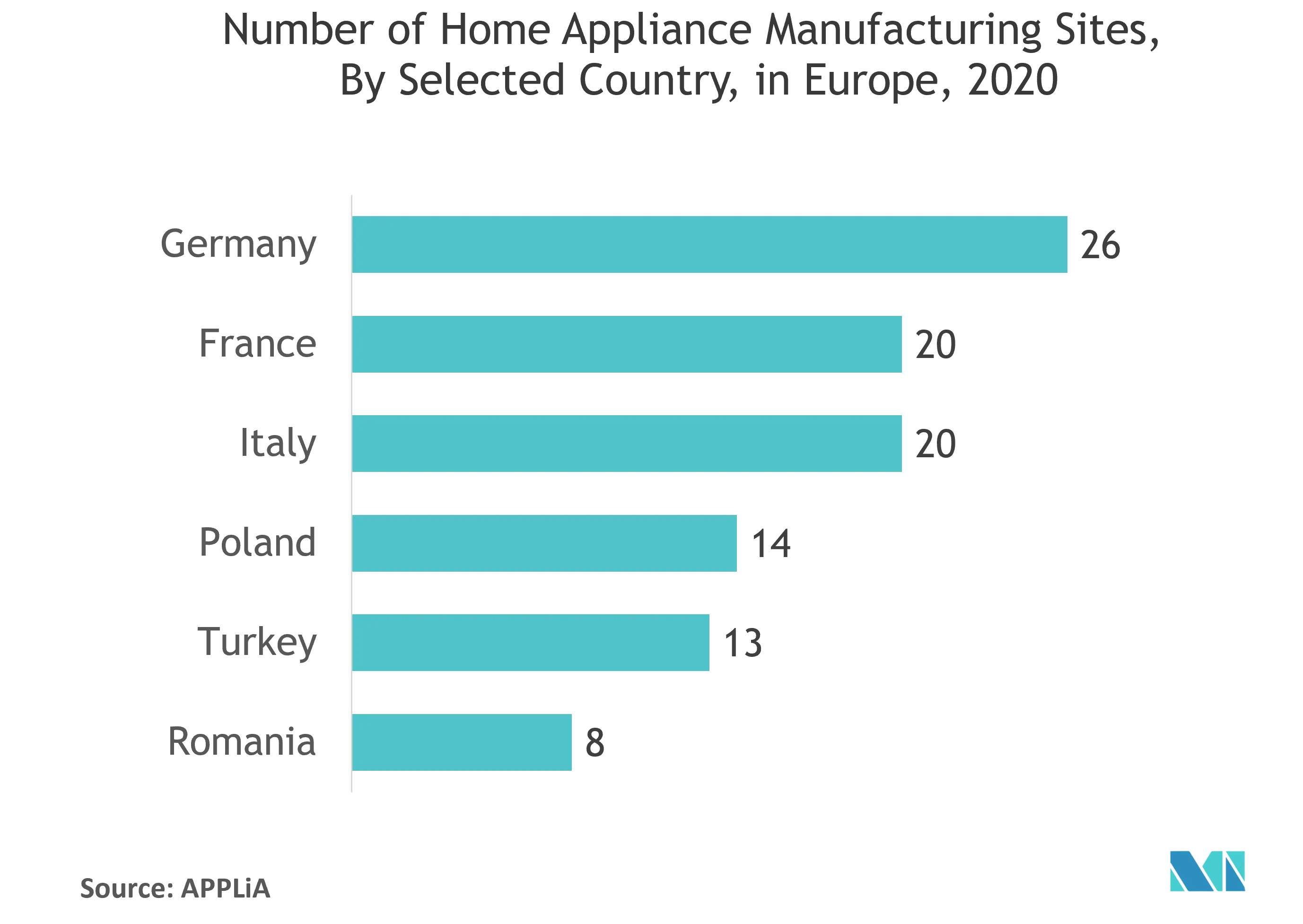
Increase in Consumption of Low Power Smart Devices
- The increasing reach of the Internet in developing countries, coupled with the proliferation of point devices and smartphones and tablets, like hubs, to manage the applications at home, is expected to change the market scenario. Moreover, continuous advancements in wireless communication technologies are major factors boosting the market for low-power home controls, driving the overall demand for microcontrollers.
- Recent advancements in electronics and data analytics have led to smart devices with built-in intelligence. The allied integration with communication technologies and the Internet is enabling the Internet of Things (IoT).
- The European Smart Metering Alliance (ESMA) initiated an Intelligent Energy Europe project that collects and disseminates information, improving energy efficiency through smart metering. ESMA deliverable D3 defines smart metering and its applications for the ESMA project that has significantly propelled the market for smart meters in Europe. Thus, the increasing investments in projects that stimulate smart meters' installation are primarily driving the studied market.
- Moreover, the increasing urbanization and the increasing inclination toward developing urban lifestyles led to the expansion of smart home technologies and devices, which involves automatic control of electricity, light, and energy to avoid wastage. Hence, the increasing adoption of smart home devices and technologies globally would foster the growth in smart meters for the residential segment.
- Smart homes are one of the EU's ten priority action areas in the Strategic Energy Technology Plan. Under the plan, the EU aims to create technologies and services for smart homes that provide smart solutions to the energy consumer.
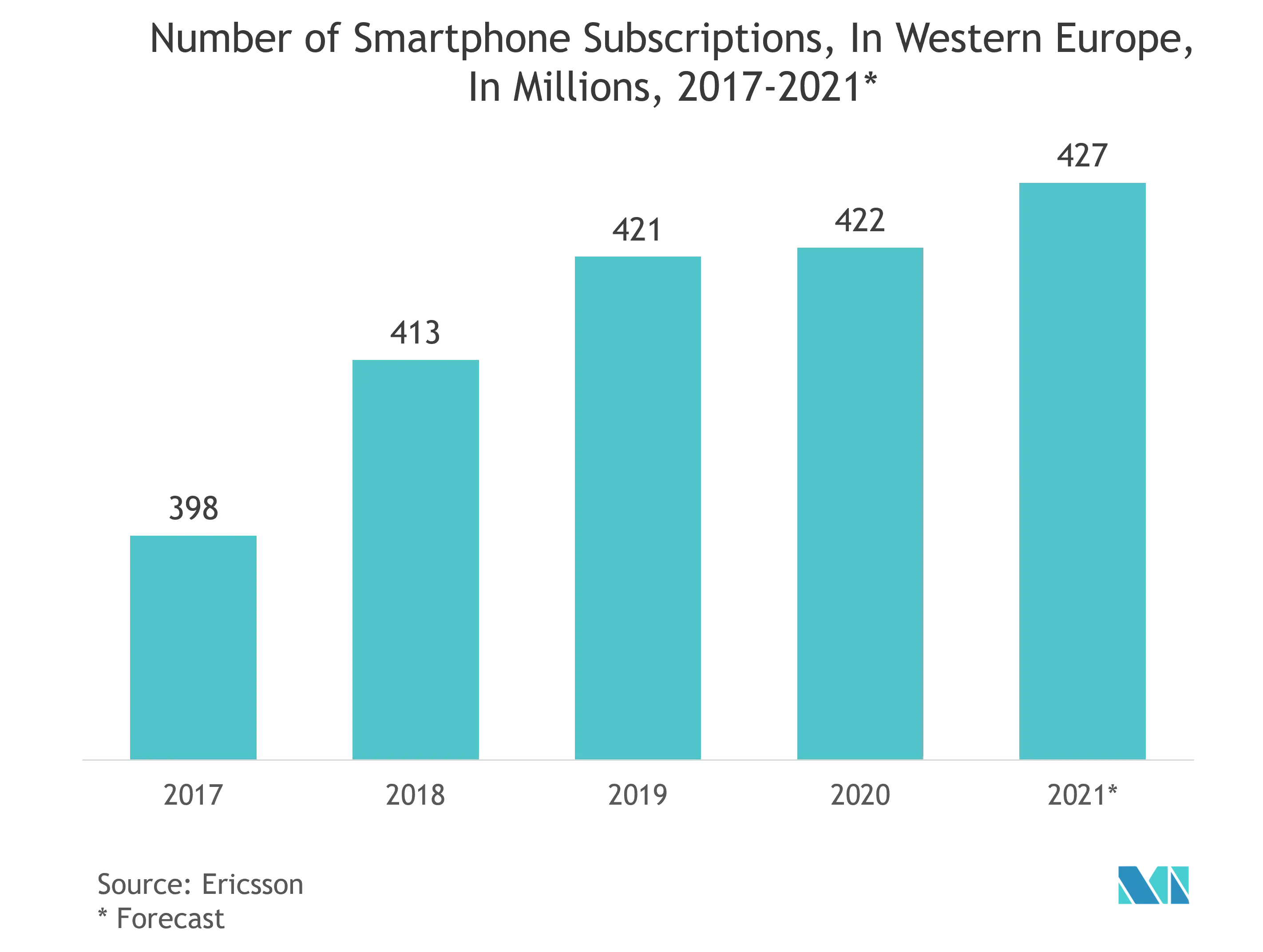
Europe 8-Bit Microcontroller Industry Overview
The Europe 8-bit microcontroller market is moderately consolidated, with market players cornering a very minimal share. The development of regional markets and increasing shares of local players in foreign direct investments are the major factors promoting the fragmented nature of the market.
- July 2021- With two mobile applications available on the app store and website st.com, STMicroelectronics has made it easier for developers to discover the proper microcontrollers and microprocessors for their projects. ST's STM8 8-bit microcontrollers, STM32 32-bit Arm Cortex-M microcontrollers, and STM32MP15 Cortex-A7 microprocessors, as well as Evaluation Boards, Discovery Kits, and Nucleo development boards are all available through the apps. After finding their desired product, users can search for related collateral such as documentation, project files, and software.
Europe 8-Bit Microcontroller Market Leaders
-
Microchip Technology Inc.
-
Renesas Electronics Corporation
-
NXP Semiconductors N.V.
-
STMicroelectronics N.V.
-
Cypress Semiconductor Corporation
*Disclaimer: Major Players sorted in no particular order
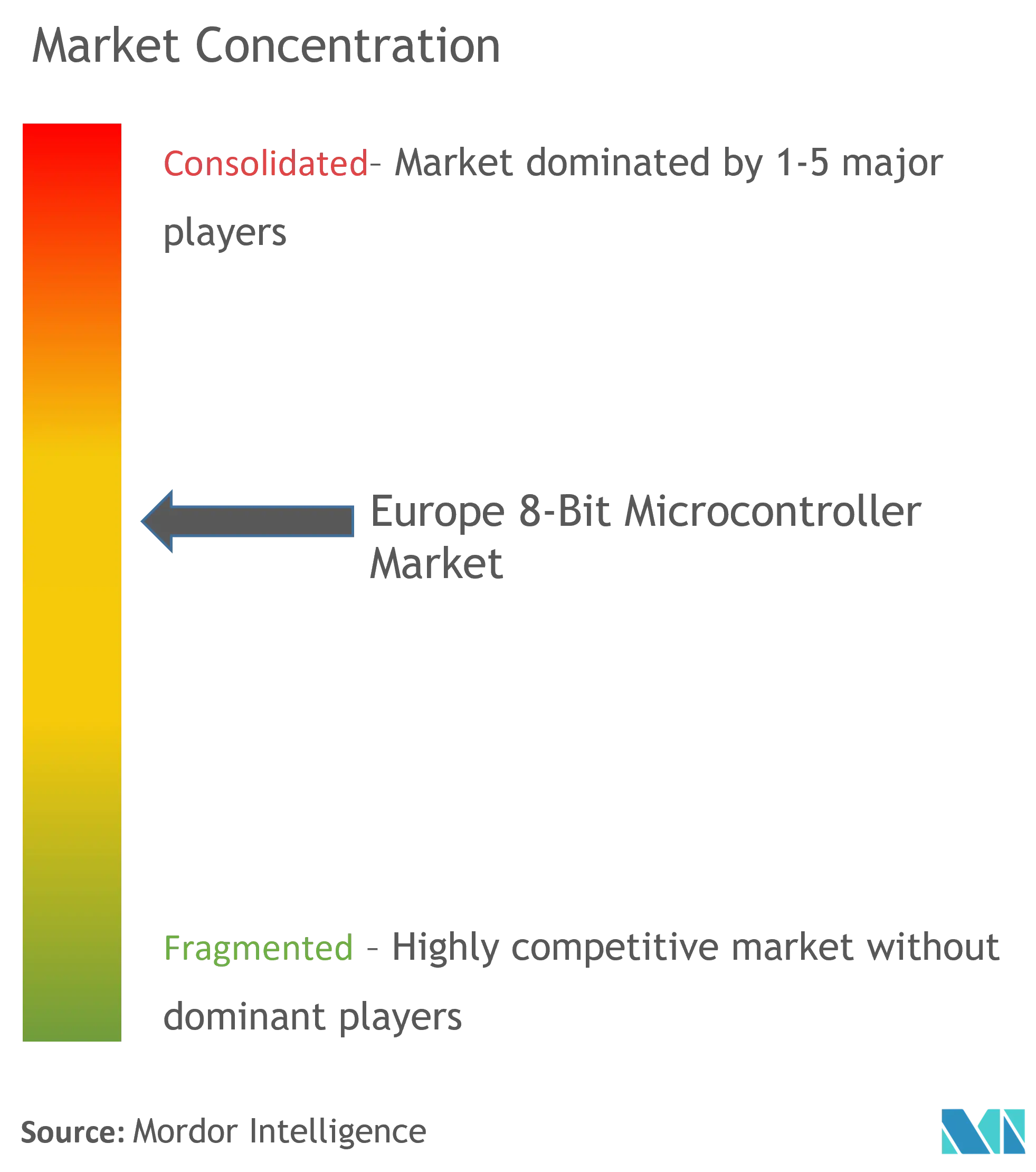
Europe 8-Bit Microcontroller Market News
- October 2021 - Toshiba Electronics Europe announced that 20 new devices are now available in the M4N group of ARM Cortex-M4 microcontrollers manufactured on a 40nm process. These devices extend the advanced classes of the TXZ + family with an ARM Cortex-M4 core with a floating-point unit (FPU) operating at speeds up to 200MHz, integrated 2MB code flash, 100k write cycles, and includes 32kB data flash memory. These microcontrollers also offer various interface and communication options such as USB 2.0 FSOTG with integrated Ethernet, CAN, and PHY.
- October 2021 - MikroElektronika (MikroE) has added support for NXP's 147 Kinesis microcontrollers to its multi-architecture software development kit. mikroSDK 2.0 is a collection of open-source software libraries with integrated APIs and software development tools that allow application code to be ported and reused on various platforms and architectures with virtually no code changes. With the addition of NXP's Kinetis family, mikroSDK 2.0 supports more than 1500 MCUs, from small 8-bit to 32-bit devices.
Europe 8-Bit Microcontroller Market Report - Table of Contents
1. INTRODUCTION
- 1.1 Study Assumptions and Market Definition
- 1.2 Scope of the Study
2. RESEARCH METHODOLOGY
3. EXECUTIVE SUMMARY
4. MARKET INSIGHTS
- 4.1 Market Overview
- 4.2 Value Chain Analysis
-
4.3 Industry Attractiveness - Porter's Five Forces Analysis
- 4.3.1 Bargaining Power of Suppliers
- 4.3.2 Bargaining Power of Consumers
- 4.3.3 Threat of New Entrants
- 4.3.4 Intensity of Competitive Rivalry
- 4.3.5 Threat of Substitutes
5. MARKET DYNAMICS
-
5.1 Market Drivers
- 5.1.1 Increasing Consumption of Low Power Smart Devices
-
5.2 Market Restraints
- 5.2.1 Intense Competition from 16-bit and 32-bit Microcontroller Systems
6. TECHNOLOGY SNAPSHOT
- 6.1 Microcontrollers' Primary Attributes
- 6.2 Major Applications
7. MARKET SEGMENTATION
-
7.1 End-User Industry
- 7.1.1 Aerospace and Defense
- 7.1.2 Consumer Electronics and Home Appliances
- 7.1.3 Automotive
- 7.1.4 Industrial
- 7.1.5 Healthcare
- 7.1.6 Data Processing and Communication
- 7.1.7 Other End-user Industries
-
7.2 Country
- 7.2.1 Germany
- 7.2.2 United Kingdom
- 7.2.3 France
- 7.2.4 Rest of Europe
8. COMPETITIVE LANDSCAPE
-
8.1 Company Profiles*
- 8.1.1 Microchip Technology Inc.
- 8.1.2 Renesas Electronics Corporation
- 8.1.3 NXP Semiconductors N.V.
- 8.1.4 STMicroelectronics N.V.
- 8.1.5 Cypress Semiconductor Corporation (Infineon)
- 8.1.6 Silicon Laboratories Inc
- 8.1.7 Holtek Semiconductor Inc.
- 8.1.8 Panasonic Corporation
- 8.1.9 Infineon Technologies AG
- 8.1.10 IXYS Corporation (LittleFuse)
9. INVESTMENT ANALYSIS
10. FUTURE OF THE MARKET
** Subject To AvailablityEurope 8-Bit Microcontroller Industry Segmentation
The Europe 8-Bit Microcontroller Market is segmented by End-user Industry (Aerospace and Defense, Consumer Electronics and Home Appliances, Automotive, Industrial, Healthcare, and Data Processing and Communication) and Country.
| End-User Industry | Aerospace and Defense |
| Consumer Electronics and Home Appliances | |
| Automotive | |
| Industrial | |
| Healthcare | |
| Data Processing and Communication | |
| Other End-user Industries | |
| Country | Germany |
| United Kingdom | |
| France | |
| Rest of Europe |
Europe 8-Bit Microcontroller Market Research FAQs
What is the current Europe 8-bit Microcontroller Market size?
The Europe 8-bit Microcontroller Market is projected to register a CAGR of 4.5% during the forecast period (2024-2029)
Who are the key players in Europe 8-bit Microcontroller Market?
Microchip Technology Inc., Renesas Electronics Corporation, NXP Semiconductors N.V., STMicroelectronics N.V. and Cypress Semiconductor Corporation are the major companies operating in the Europe 8-bit Microcontroller Market.
What years does this Europe 8-bit Microcontroller Market cover?
The report covers the Europe 8-bit Microcontroller Market historical market size for years: 2019, 2020, 2021, 2022 and 2023. The report also forecasts the Europe 8-bit Microcontroller Market size for years: 2024, 2025, 2026, 2027, 2028 and 2029.
Europe 8-bit Microcontroller Industry Report
Statistics for the 2024 Europe 8 - Bit Microcontroller market share, size and revenue growth rate, created by Mordor Intelligence™ Industry Reports. Europe 8 - Bit Microcontroller analysis includes a market forecast outlook to 2029 and historical overview. Get a sample of this industry analysis as a free report PDF download.



